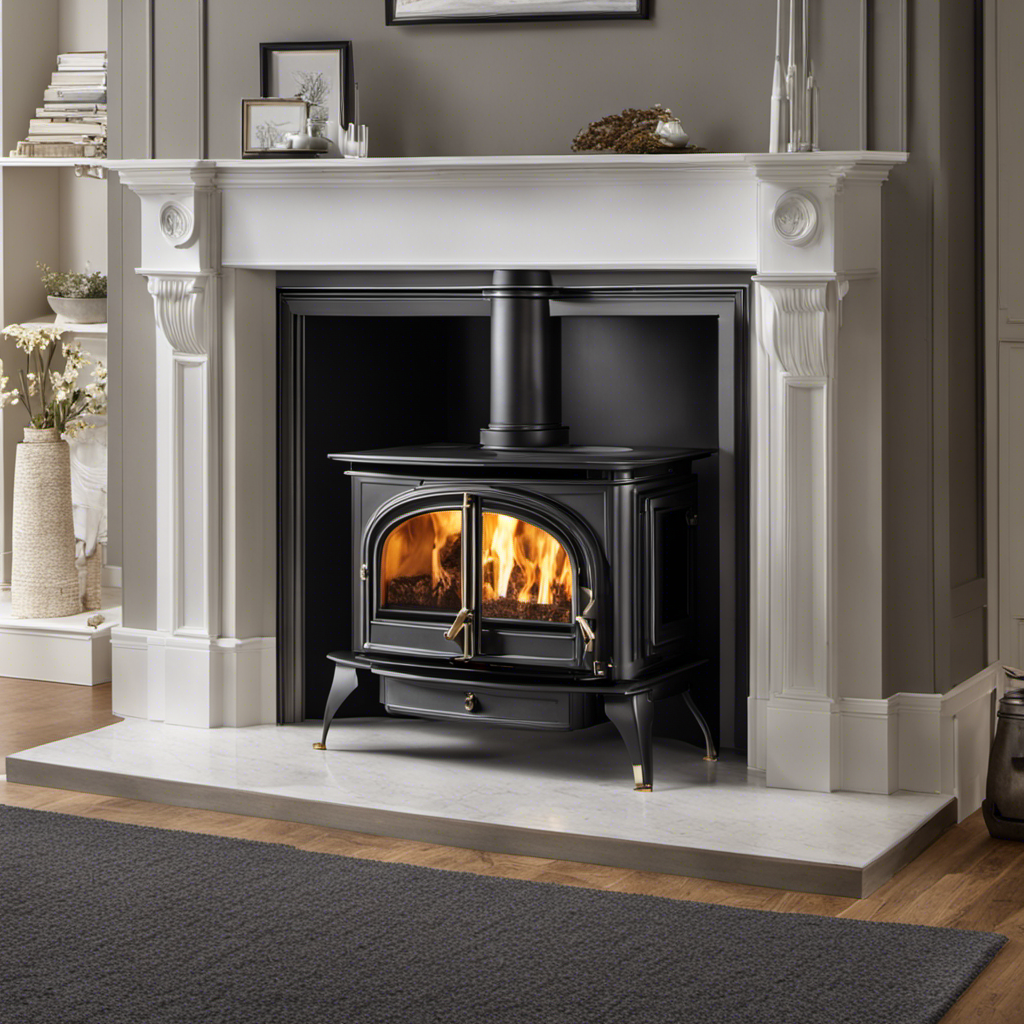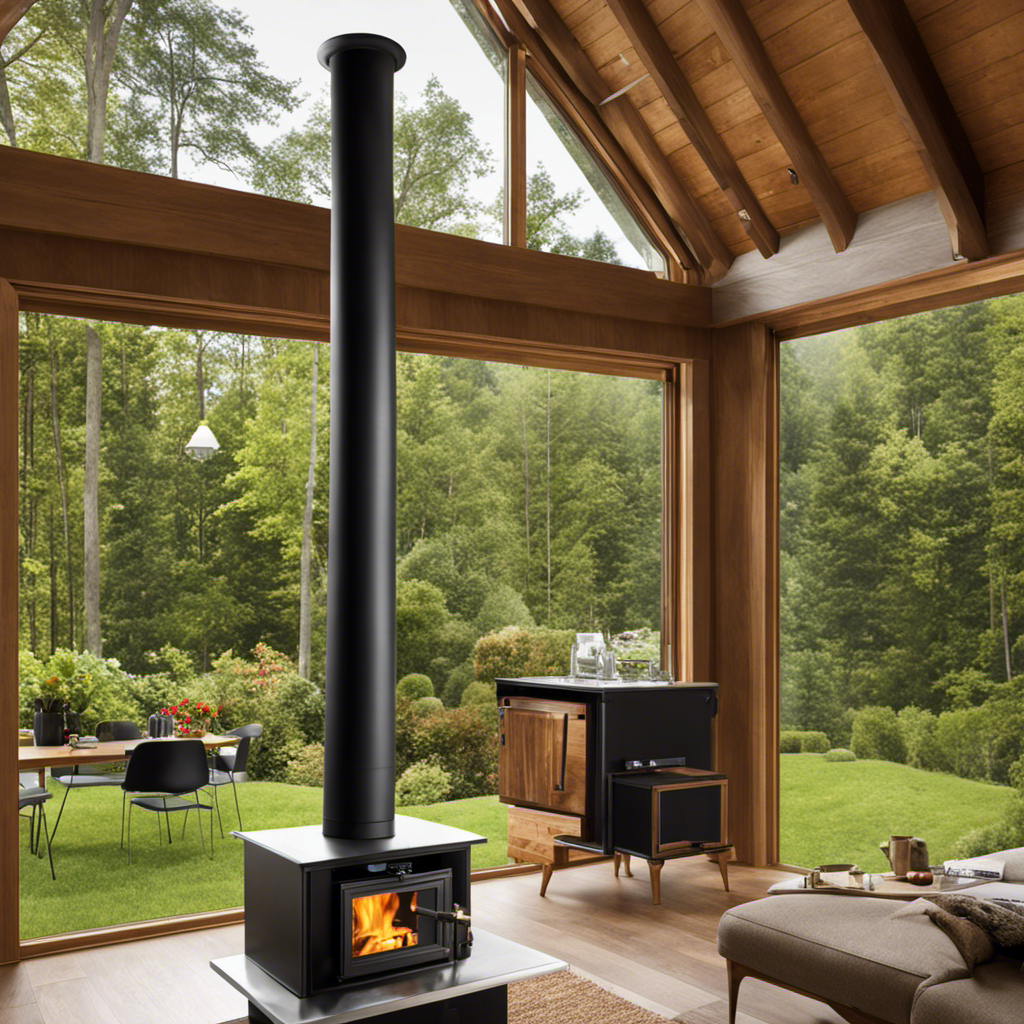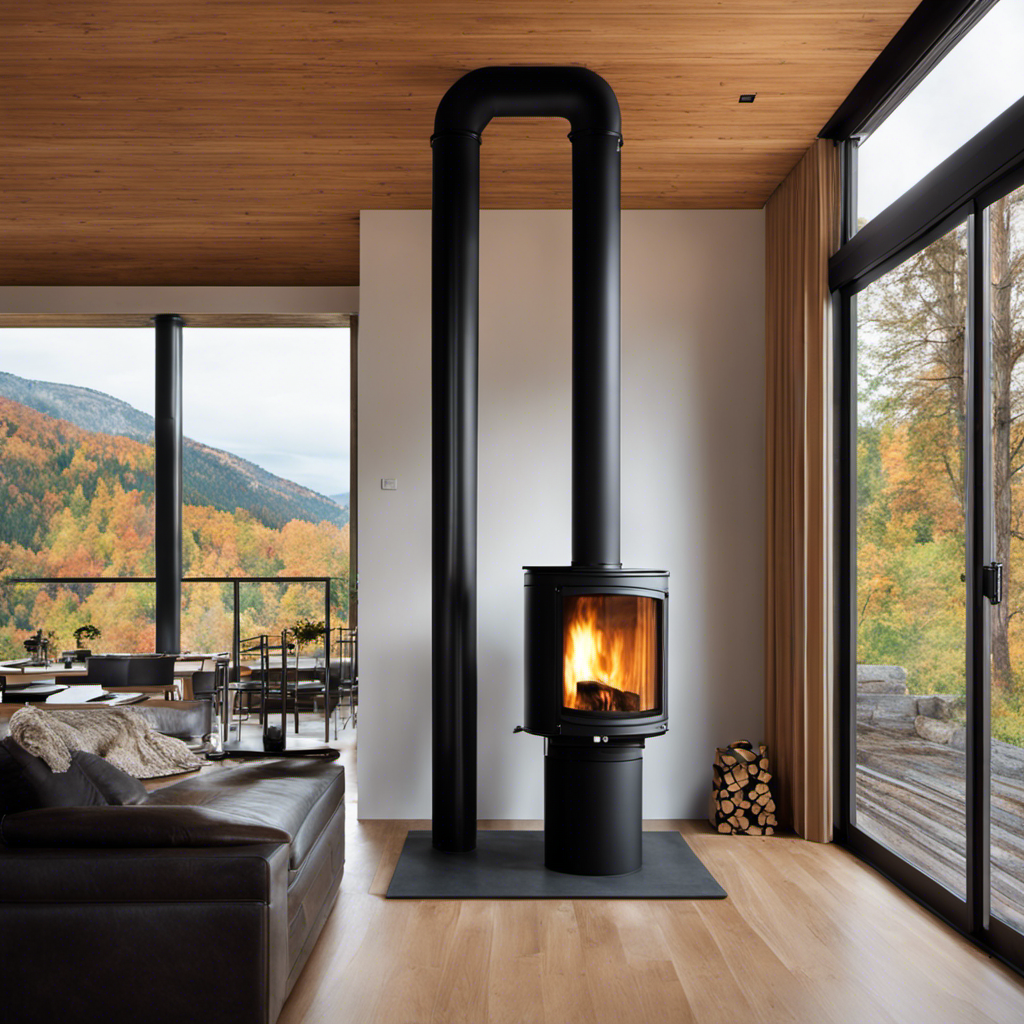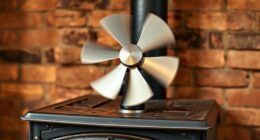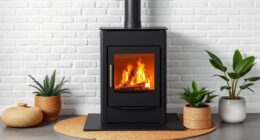Getting a wood stove ready may appear daunting at first, but with the right knowledge, it can be a simple task. This article offers a comprehensive guide on efficiently preparing your wood stove for the upcoming winter season.
From cleaning the chimney to stocking up on firewood, I’ve got you covered.
So grab your tools and let’s get started on this essential task that will keep you warm and cozy all winter long.
Key Takeaways
- Take safety precautions and wear protective gear
- Clean the chimney thoroughly and remove potential fire hazards
- Inspect and maintain the venting system for proper airflow and to prevent damage
- Store and prepare firewood properly for optimal burning efficiency
Cleaning the Chimney
I need to clean the chimney before using the wood stove.
It’s important to take safety precautions when performing this task to ensure a safe and efficient operation of the wood stove.
One of the main risks associated with a dirty chimney is the build-up of creosote, a highly flammable substance that can lead to chimney fires.
To remove creosote, I’ll start by wearing protective gear, such as gloves and goggles, to prevent any accidents or injuries.
Next, I’ll use a chimney brush to scrape off the creosote from the walls of the chimney.
It’s crucial to thoroughly clean the entire length of the chimney to eliminate any potential fire hazards.
Once the chimney is clean, I can confidently enjoy the warmth of my wood stove, knowing that I’ve taken the necessary precautions to ensure my safety.
Inspecting the Flue and Venting System
Before lighting the wood stove, it’s important to inspect the flue and venting system to ensure proper airflow and prevent any potential hazards.
Here are four key steps to follow:
-
Check for obstructions: Inspect the flue for any blockages such as bird nests, debris, or creosote buildup. These obstructions can restrict airflow and increase the risk of a chimney fire.
-
Examine the flue liner: Inspect the flue liner for any signs of damage or deterioration. Cracks or holes can allow smoke and gases to escape into your home, posing a health hazard.
-
Inspect the damper: Ensure that the damper opens and closes smoothly. A malfunctioning damper can impact the stove’s performance and lead to energy loss.
-
Assess the venting system: Inspect the entire venting system, including the chimney cap, to ensure it’s intact and properly sealed. Any gaps or damage can allow moisture to enter, leading to corrosion and deterioration.
Checking and Replacing Gaskets and Seals
Inspecting and replacing gaskets and seals is crucial for maintaining the proper functioning of a wood stove. Gasket maintenance ensures that the stove operates efficiently and safely. Over time, gaskets can become worn or damaged, leading to air leaks and decreased heat output.
To perform gasket maintenance, start by removing the old gasket using a scraper or wire brush. Clean the surface thoroughly to ensure a proper seal. Next, measure the length of the gasket and cut a new one to size. Apply a high-temperature adhesive to the stove and press the gasket firmly into place. Allow it to dry according to the manufacturer’s instructions.
Seal replacement is also important for preventing smoke leaks. Inspect the seals around the door and ash pan regularly and replace any damaged or worn seals promptly.
Cleaning and Maintaining the Firebox and Grates
To keep the wood stove in optimal condition, it’s essential to regularly clean and maintain the firebox and grates. Here are four steps to help you effectively clean and maintain your wood stove:
-
Gather your cleaning tools: You’ll need a metal brush, ash shovel, and a bucket for collecting the ash.
-
Allow the fire to burn out completely: Before cleaning, ensure that there are no remaining embers or hot coals in the firebox.
-
Remove the ash: Using the ash shovel, carefully scoop out the ash from the firebox. Place the ash in a metal container and dispose of it properly.
-
Clean the grates: With the metal brush, scrub the grates to remove any built-up residue. Pay special attention to the areas with stubborn ash deposits.
Regularly following these steps will help maintain the efficiency and longevity of your wood stove. Happy cleaning!
Stocking Up on Firewood and Fuel
I need to buy more firewood and fuel, so I can stock up for the winter. Storing firewood properly is essential to ensure it stays dry and ready for use.
The wood should be stored in a well-ventilated area, preferably off the ground to prevent moisture absorption. It’s crucial to stack the wood in a way that allows air circulation, such as using a woodshed or stacking it on pallets.
Choosing the right type of fuel is also important for efficient and clean burning. Hardwoods like oak and maple are ideal as they burn longer and produce more heat. Softwoods like pine can be used, but they burn faster and may require more frequent refueling.
It’s essential to consider the moisture content of the wood as well, aiming for a moisture level of around 20% for optimal burning.
Frequently Asked Questions
How Do I Properly Light a Fire in My Wood Stove?
To properly light a fire in a wood stove, I follow specific lighting techniques and safety precautions. It’s important to ensure proper ventilation, use dry and seasoned wood, and avoid using accelerants.
What Should I Do if I Notice Smoke Coming Out of My Wood Stove?
If I notice smoke coming out of my wood stove, I would troubleshoot the issue by checking for a proper draft, ensuring the damper is open, and inspecting the chimney for any blockages. Regular maintenance is crucial to prevent such problems.
Can I Use Any Type of Wood in My Wood Stove?
Well, when it comes to using wood in a wood stove, not all types are created equal. Some burn hotter and longer, while others produce more smoke and residue. It’s important to consider the pros and cons before making a choice.
How Often Should I Clean the Ashes From My Wood Stove?
I clean the ashes from my wood stove regularly to maintain proper airflow and prevent buildup. The cleaning frequency depends on usage, but generally, I dispose of the ashes in a metal container and store them away from flammable materials.
Is It Safe to Leave My Wood Stove Unattended Overnight?
Leaving a wood stove unattended overnight can pose nighttime safety risks and potential dangers. It is important to ensure proper ventilation, clear any flammable materials, and regularly maintain the stove to minimize these risks.
Conclusion
In conclusion, by following these steps, you can ensure that your wood stove is well-prepared for use.
Taking the time to clean the chimney, inspect the flue and venting system, check and replace gaskets and seals, clean and maintain the firebox and grates, and stock up on firewood and fuel will help ensure the efficiency and safety of your wood stove.
By paying attention to these details, you can enjoy a warm and cozy fire all winter long.
Logan’s affair with adventure began in childhood. He hailed from a small town where vast forests bordered one side and endless shores stretched on the other. His days were spent exploring uncharted woods, climbing tall trees, or listening to the tales of old sailors. This early immersion in a world brimming with stories and mysteries became the foundation of his passion for writing.


